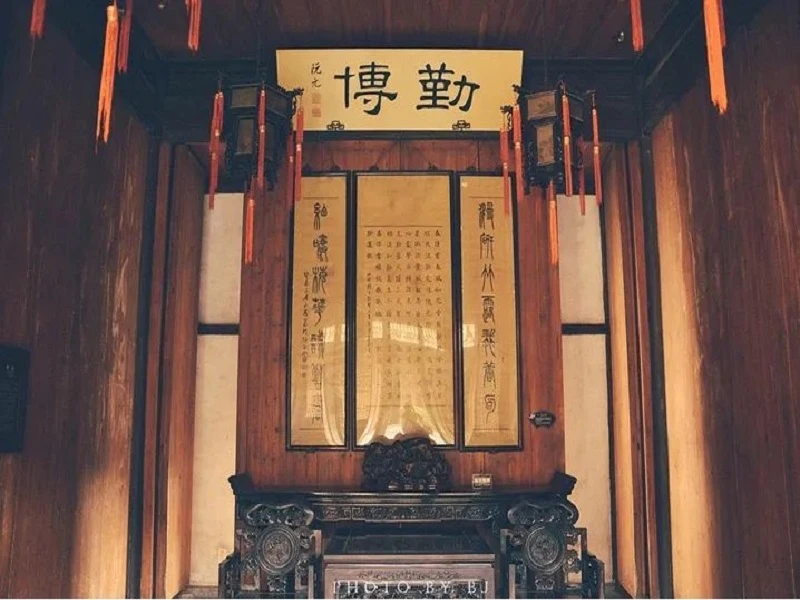Ge Garden (个园): A Timeless Masterpiece of Chinese Landscaping
When one mentions Ge Garden, one of China’s Four Great Gardens, it’s not just the locals of Yangzhou who recall the legacy of Huang Zhiyun (黄至筠), the famous salt merchant of the Qing Dynasty. Visitors from all corners of the world also come to appreciate the refined tastes of this esteemed garden’s original owner. Established in 1988 as a national key cultural relic, the history of Ge Garden traces back to the Ming Dynasty when it was known as Shouzhi Garden.
The Poetic Charm of Yangzhou’s Landscape
Yangzhou, with its millennia-long literary elegance, was immortalized in the poetry of Li Bai, whose line “In the mist and flowers of March, I head down to Yangzhou,” paints a vivid picture of a springtime wonderland. This poetic allure makes Yangzhou a dream destination for many.
Among the city’s must-visit attractions, Ge Garden stands out along with Slender West Lake. Known for its abundant bamboo, Ge Garden’s name is derived from the resemblance of bamboo leaves to the Chinese character "个", which’s pinyin is Ge. The garden’s record, "Ge Garden Chronicles," describes its serene ponds and pavilions, complemented by verdant bamboo groves, making it a place of sublime beauty.
The garden’s meticulous design embodies the scholarly elegance of its era. The layout, typical of southern Chinese private gardens, features a north-to-south progression from bamboo groves to rockeries and residential quarters. Each section stands independently yet harmoniously, showcasing a perfect blend of artistry and nature.
One of the garden’s unique features is its rockeries, crafted from various stones to represent the four seasons. These seasonal rockeries not only embody the principles of garden design but also mirror the aesthetics of Chinese landscape painting. Renowned garden expert Chen Congzhou praised Ge Garden as a singular example in China for its artistic integration.
A Garden That Embodies the Four Seasons
Ge Garden’s rockeries are celebrated for their intricate artistry. Composed of bamboo stones, lake stones, yellow stones, and Xuan stones, the four seasonal rockeries are themed to reflect the characteristics of each season: Spring is cheerful and inviting, Summer is lush and vibrant, Autumn is clear and crisp, and Winter is serene and contemplative. Among these, the spring rockery is particularly striking, with stone bamboo shoots interspersed among the groves, encapsulating the theme of "a perfect spring that cannot be hidden."
Strolling through Ge Garden feels like traveling through the seasons. The spring rockery’s poetic design, "A good spring that cannot be concealed, the bamboo is most affectionate and rainy," creates a dynamic yet tranquil atmosphere, leaving a lasting impression on every visitor.
The Visionary Behind Ge Garden: Huang Zhiyun
Ge Garden, constructed in the 23rd year of the Jiaqing reign (1818) during the Qing Dynasty, is steeped in scholarly culture, reflecting the refined tastes of its creator, Huang Zhiyun. A path lined with silver osmanthus trees leads to the Congshu Building, adorned with couplets that inspire readers to emulate the purity and humility of orchids and bamboo. This philosophical approach to learning and scholarship underscores the cultural depth of Ge Garden.
Huang Zhiyun, also known as Huang Yingtai and later referred to as Ge Yuan, was a distinguished figure. As a salt merchant and scholar, his achievements in literature and painting were as remarkable as his commercial success. His ability to navigate both the business and cultural realms is evident in the sophisticated design of Ge Garden.
A descendant of an official family, Huang’s father served as a prefect in various regions. Despite family setbacks, Huang Zhiyun’s resilience and strategic alliances, particularly with Liang Kentang, the Viceroy of Zhili, paved the way for his rise. Liang’s support and his marriage to Liang’s granddaughter played crucial roles in Huang’s success.
Huang’s dedication to Ge Garden reflected his cultural values and aesthetic sensibilities. His significant investment in the garden, rumored to equal Jiangsu’s annual fiscal revenue, underscores his commitment to creating a space of unparalleled beauty and scholarly ambiance. The portrait of Huang Zhiyun, housed in the Forbidden City, depicts him as a young, elegant scholar, a testament to his enduring legacy.
The Everlasting Beauty of Ge Garden
Although time has seen the garden change hands, Ge Garden remains a testament to the splendor of Yangzhou’s historical and cultural heritage. The intricate rockeries and lush bamboo groves continue to captivate visitors, offering a glimpse into the refined world of its creator.
Walking through Ge Garden, one experiences the cyclical beauty of the four seasons, a living canvas of Chinese classical garden design. It stands as a symbol of the enduring charm of Yangzhou, a place where history, culture, and nature intertwine to create an everlasting masterpiece.



